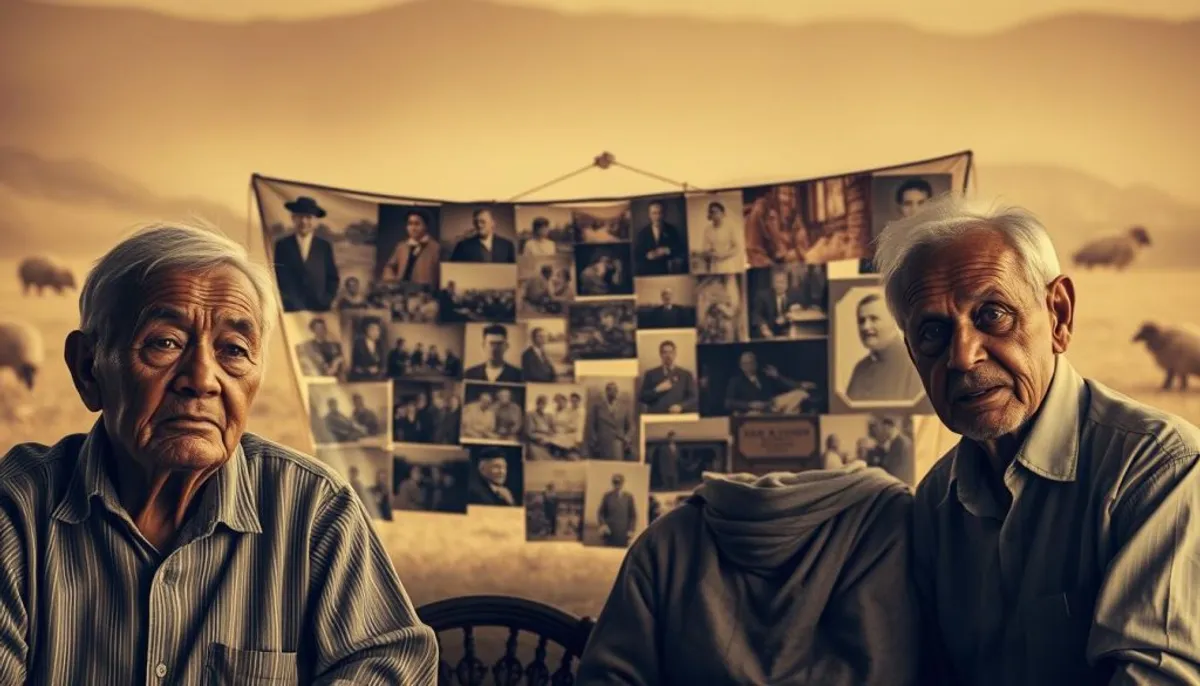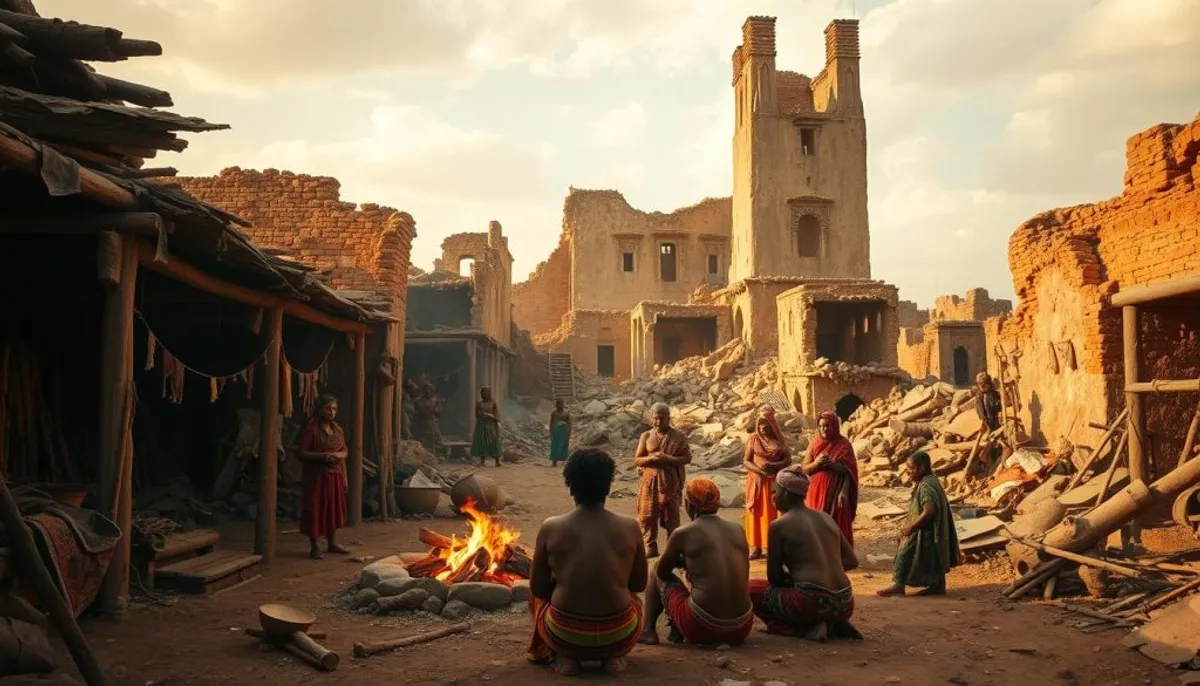
The quote “Culture is what remains when we have lost everything” deeply evokes our contemporary society. This phrase, often misattributed to Édouard Herriot, finds its true origins in the writings of Swedish essayist Ellen Key. In 1891, Key stated: “Culture is what remains when we have forgotten everything we learned.”
This reflection highlights the importance of our cultural heritage in the face of life's uncertainties. With an average rating of 4.54/5 based on 508 votes, this quote captures the collective imagination. It invites us to reflect on the enduring nature of culture.
In a world where material possessions can disappear in an instant, our cultural heritage persists. It forms the foundation of our identity and supports us even in the most difficult moments. Culture transcends academic knowledge to become an essential part of our being, both individually and collectively.
The historical origins of this famous quote
The quote “Culture is what remains when we have lost everything” is marked by a captivating history. It sheds light on cultural transmission. This phrase, rooted in our collective memory, has crossed borders and time. It has become a symbol of our collective identity.
Ellen Key: the true Swedish author
Ellen Key, a visionary Swedish educator, forged this thought in 1891. In her article “We kill the spirit in schools,” she expresses this idea that still resonates today. Key, ahead of her time, already emphasized the importance of culture as a pillar of our identity.
The erroneous attribution to Édouard Herriot
By a strange twist of fate, this quote was long attributed to Édouard Herriot, a French politician. In his memoirs, Herriot mentions it, attributing it to “an oriental moralist.” This confusion perfectly illustrates the very essence of the quote: the exact source has been lost, but the idea has endured.
The international transmission of the aphorism
The history of this aphorism demonstrates the strength of cultural transmission. From Sweden to France, and then to the world, this phrase has traveled, enriching itself with new interpretations. It has become a living testimony of how ideas cross borders, contributing to our collective identity.
| Original Author | Erroneous Attribution | Year of Origin |
|---|---|---|
| Ellen Key | Édouard Herriot | 1891 |
This quote, born from the pen of Ellen Key, perfectly illustrates how culture is transmitted and perpetuated, even when its origins are lost in the meanders of history. It remains a powerful reminder of the importance of our cultural heritage in shaping our collective identity.
The philosophical dimension of intangible cultural heritage
The concept of intangible heritage, adopted by UNESCO, encompasses practices, representations, and ancestral know-how passed down from generation to generation. It goes beyond tangible monuments to reach the essence of our cultural identity.
Intangible cultural heritage is essential to the construction of collective identity. It offers communities an anchor and continuity while promoting cultural diversity and human creativity.
This heritage includes performing arts, rituals, social practices, and knowledge related to nature. For example, the Morlaix Tobacco Factory, closed in 2004, shows how a place can symbolize a rich intangible heritage, even after the end of its industrial activity.
| Aspect of Intangible Heritage | Concrete Example |
|---|---|
| Technical Know-How | Invention of the cigarette packing machine (1905) |
| Social Practices | Social assistance systems developed at the Factory |
| Transmission of Knowledge | Application School created in 1824 |
The preservation of this intangible heritage requires an approach that combines the material and immaterial aspects of our culture, notably the richness of Quebec traditions and Congolese culture. This invisible yet strong network connects us to our past and shapes our collective identity.
Culture is what remains when we have lost everything
Culture stands as a pillar of resilience in the face of life's challenges. It becomes a refuge when everything seems to collapse around us. This profound idea finds its origin in a quote often wrongly attributed to Édouard Herriot. However, its essence remains timeless.
Cultural resilience in the face of loss
Our traditions and our collective identity act as a bulwark against adversity. They allow us to rise again and rebuild, even after losing everything. This cultural resilience manifests through our arts, customs, and language.
Cultural heritage as an identity anchor
Our cultural heritage forms the foundation of our identity. It connects us to our roots and our history. It is what remains when everything else has disappeared. This identity anchor gives us the strength to overcome the toughest challenges.
The transmission of essential knowledge
The sustainability of our culture relies on the transmission of essential knowledge. This knowledge, once integrated, becomes an indelible part of ourselves. It constitutes what remains when we have forgotten everything, as Ellen Key suggested as early as 1891 in the magazine Verdandi. An inspiring quote on this subject could remind us of the importance of this knowledge passed down through generations.
Culture is this immaterial baggage that accompanies us everywhere. It nourishes our resilience, shapes our identity, and ensures the continuity of our traditions across generations.
The role of collective memory in cultural preservation
Collective memory is essential for preserving our cultural heritage. It forges our identity and ensures the transmission of our traditions. José Vidal-Beneyto defines it as “the set of representations predominantly shared” by a community.
Oral traditions and their perpetuation
Oral traditions are the foundation of collective memory. They include stories, songs, and tales passed down from generation to generation. In 1978, oral history was considered marginal in the historical field. Today, it is an invaluable tool for historical sciences, exploring orality in various contexts.
Community rituals and practices
Community rituals and practices reinforce the sense of belonging. They manifest through traditional festivals or daily gestures. The war memorials in each municipality symbolize the memory of the deceased and patriotic values. They illustrate the symbolic incorporation of collective memory into public space.

The importance of intergenerational links
Intergenerational links are crucial for cultural preservation. They ensure the continuity of our cultural heritage. Listening to elders and transmitting to younger generations ensures the longevity of our traditions. This dynamic process allows culture to survive, even in the face of adversity.
| Aspect of Collective Memory | Impact on Cultural Preservation |
|---|---|
| Oral Traditions | Transmission of ancestral stories and knowledge |
| Community Rituals | Reinforcement of the sense of belonging |
| Intergenerational Links | Continuity and adaptation of cultural practices |
Cultural identity as a refuge
Cultural identity is fundamental in our lives, especially in times of crisis. It acts as a shield, providing us with a solid anchor in the face of challenges. This notion of collective identity is deeply linked to our cultural heritage, forming a pillar of our personal and social resilience.
Our culture, with its traditions, language, and arts, becomes a source of comfort in times of distress. It reminds us who we are and where we come from, strengthening our sense of belonging and our ability to overcome adversity.
The Fribourg declaration emphasizes the importance of cultural rights. It states that everyone has the right to choose and freely express their cultural identity. This right is considered fundamental to the integrity of the person and the effective exercise of other human rights.
| Cultural Aspect | Role in Resilience |
|---|---|
| Mother Tongue | Preserves the link with one's roots |
| Traditions | Offers stability and continuity |
| Arts and Creativity | Allows for expression and healing |
| Cuisine | Provides comfort and memories |
Cultural diversity, recognized as a wealth by UNESCO, is essential. It guarantees everyone their identity and creative resources. It promotes peaceful coexistence and the expression of the plurality of cultures, thus contributing to the collective resilience of our societies.
Culture as a vector of social resilience
In the face of environmental and social challenges, culture proves to be a powerful vector of resilience. It enables communities to overcome adversity and preserve their collective identity. This capacity is essential for the survival and development of societies.
Art and creation in times of crisis
In difficult times, art becomes an essential outlet. In Valencia, after the devastating flood of 1957, local creativity played a crucial role in the healing process. Artists transformed tragedy into powerful works, helping the community face trauma and rebuild its identity.

The maintenance of traditions in the face of adversity
Traditions embody cultural resilience. In the Sahel, in the face of recurring droughts, populations adapt their ancestral agricultural practices. They diversify land use and return to traditional subsistence methods, demonstrating the value of cultural knowledge in adapting to climate change.
The unifying force of culture
Culture brings communities together beyond differences. In France, cultural decentralization strengthens territorial identity. UNESCO emphasizes that respectful cultural development allows communities to participate in globalization on their own terms, thus preserving their uniqueness while adapting to global changes.
This collective cultural resilience proves that culture is much more than entertainment. It is a pillar of our identity, guiding us through crises and reminding us who we are, even when everything seems lost.
Conclusion
Our exploration of culture has revealed the importance of the saying “culture is what remains when we have lost everything.” This maxim, often attributed to Édouard Herriot, finds its true origins in the writings of Ellen Key, a Swedish author. It highlights the complexity of cultural transmission.
Culture, this intangible heritage, plays a crucial role in our resilience in the face of challenges. It manifests through our traditions, arts, and knowledge. These elements form a lasting legacy, even in the most difficult times. This cultural resilience echoes the 200 definitions of culture proposed by Kroeber and Kluckhohn, emphasizing its diversity and role in our collective identity.
Culture proves to be a refuge, an essential foundation when one feels lost. It reflects our collective history, influenced by thinkers like Rousseau, Nietzsche, and Sartre. Each has contributed to our understanding of culture. Thus, culture represents an intangible treasure that defines and guides our existence, a precious heritage to pass on to future generations.
RelatedRelated articles


